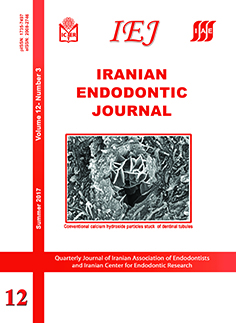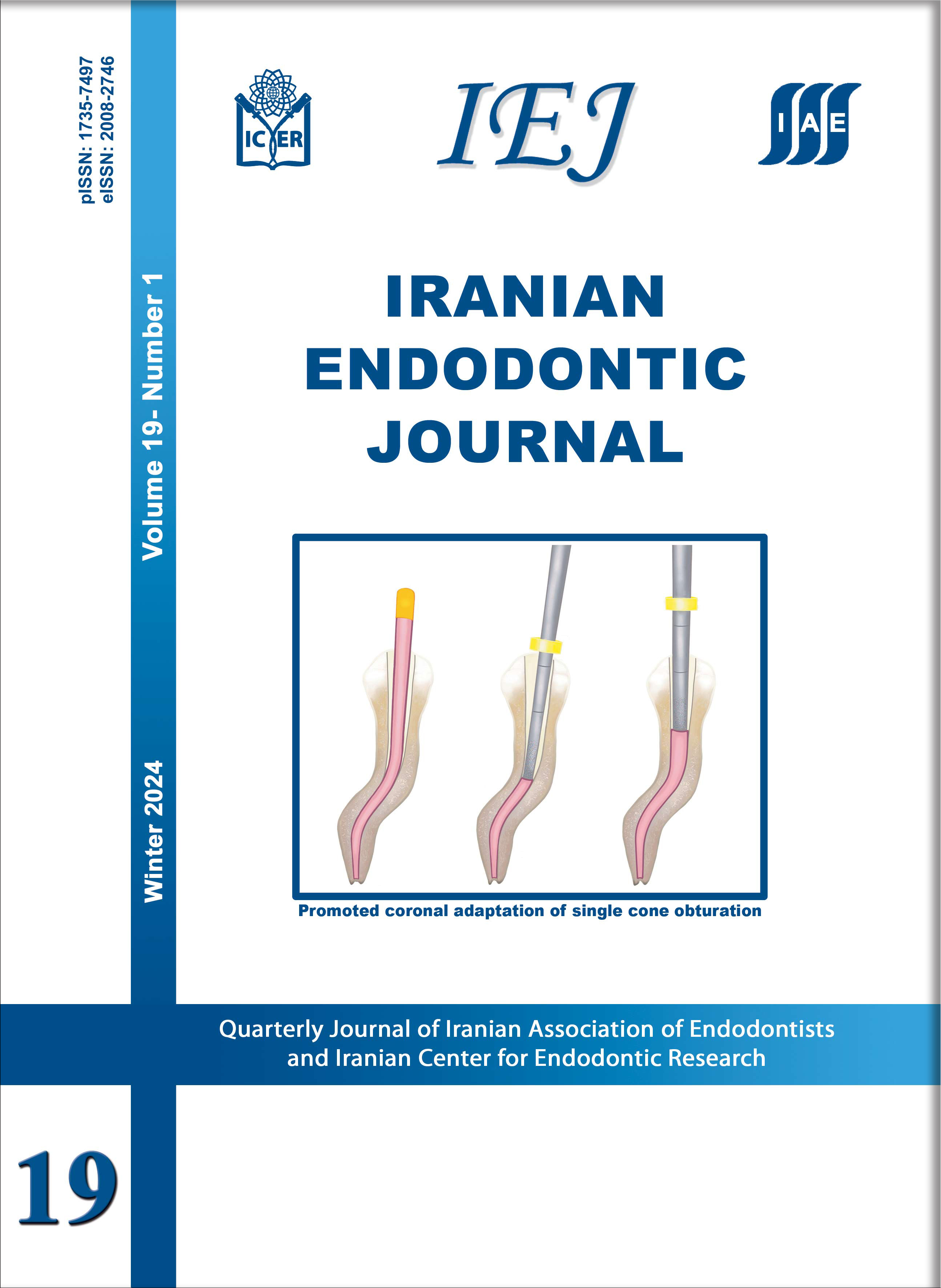Success Rate and Time for Bypassing the Fractured Segments of Four NiTi Rotary Instruments
Iranian Endodontic Journal,
Vol. 12 No. 3 (2017),
2 July 2017
,
Page 349-353
https://doi.org/10.22037/iej.v12i3.16866
Abstract
Introduction: The aim of this in vitro study was to compare the success rate and time required for bypassing the fractured segments of four different nickel-titanium (NiTi) rotary systems. Methods and Materials: This study was conducted on the mesiobuccal canals of 60 mandibular molars with fully-formed apices. Fifteen Flex Master, K3, RaCe and Hero Shaper instruments with 0.04 taper and tip size of #30 and 25 mm in length, were obtained. These instruments were notched at a point 3 mm from the tip of the instrument and were driven into the canals using a handpiece until the instruments fractured and became lodged therein. In the next step, an endodontist tried to bypass the fractured segment using K-files. The number of bypassed samples and the time required for bypassing of each sample were recorded. The Chi-square test was used to compare the bypassing rate among the experimental groups. One-way analysis of variance followed by Tukey’s post hoc test was conducted to compare the time taken for bypassing of the fractured fragments. Results: One instrument in Flex Master group and two broken segments in each of the K3 and Hero groups were not bypassed. All of the samples in RaCe group were bypassed. No significant difference was found among four tested groups regarding rate of bypassing (P=0.738). The time taken to bypass fragments in the Hero group was significantly more than in those of K3 (P=0.047) and RaCe (P=0.024). Conclusion: Under the limitations of this study, design features of rotary files can influence the time needed to bypass separated fragments.
Keywords: Instrument Fracture; Instrument Separation; File Fracture; Fractured Instrument; NiTi Rotary File; Root Canal Treatment
How to Cite
- Abstract Viewed: 673 times
- PDF Downloaded: 722 times




